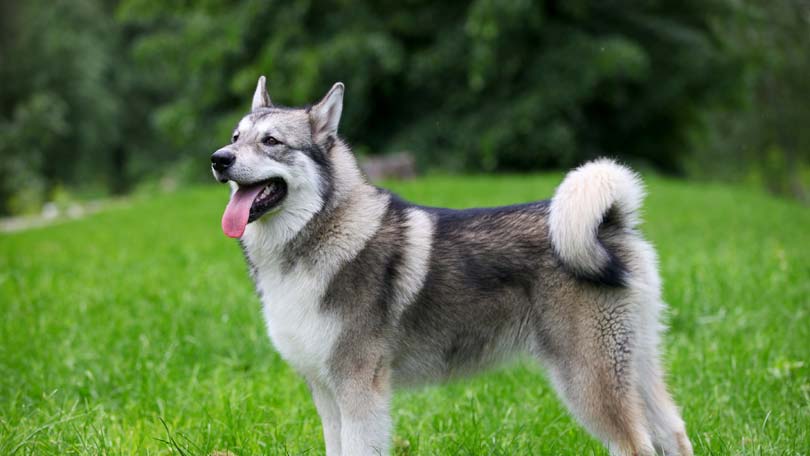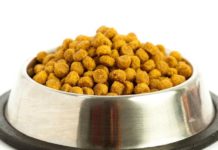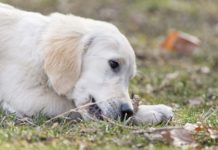
We’ve all been there. You go out to the store, but, but you can’t figure out why all those people are staring at you. Finally, you return home, only to realize that the hairy evidence of that enthusiastic greeting your dog gave you earlier is all over your clothes, making you look like a walking, talking wooly mammoth!
Almost all dogs shed to some degree or another. Shedding can be worse during seasonal changes such as Autumn (when they shed the summer coat to prepare for a thicker winter coat) and Spring (where the thick winter coat is shed for the summer coat), but many dogs shed year-round. Coping with a shedding dog can be one of the most frustrating parts of pet ownership. But with careful management, and a little daily attention, most shedding can be reduced and managed.
Step One: Know Your Dog
Shedding is the natural process of loosing hair, and allowing a new coat to come in. Humans shed too- the hair on our heads is constantly being shed out, and new hairs growing in their place. We don’t notice it because a) we brush our hair several times a day, and the shed hair is accumulated into a brush and b) our coat is only on our head.
Almost every dog sheds all the time. Low shedding breeds such as poodles and some terriers are also breeds that tend to be kept clipped short- so their shed coat is not nearly as noticeable as that of other breeds.
The heaviest shedding types of dog are those with short coats, such as Corgis, German Shepherds, Labs and Jack Russell’s. Short coated dogs (not to be confused with smooth coated dogs, who shed also but to a lesser degree), have coats that are short in lenght, but extremely thick. The thickness of the coat means that large amounts of hair is constantly being shed, and will gladly rub off on furniture, carpets, and your favorite pair of pants.
Dogs with thick, double coats, such as Collies, Shelties, Chow Chows and Husky breeds have a coat that can be particularly difficult and high-shedding. These dogs shed a thick undercoat, which easily mats into their long outer hair. Their hair often appears to shed in clumps that appear on the floors, sofas and anywhere else your pet has rested.
Step Two: Brush, Brush, Brush!
Brushing your dog regularly is the single most effective thing you can do to reduce shedding. Remember, the hair is going to fall out either way- and it’s easier for you to deal with if it is on a brush, rather than all over your house.
In addition to removing hair that is already loose from your dogs’ coat, brushing loosens the hair at the follicle, and helps to remove hairs that are beginning to fall out. In double-coated dogs, deep, regular brushing removes the dead undercoat, allowing for a cleaner dog with less hair to shed around.
Aside from cutting down on shedding, brushing has a number of other health benefits for your dog. Regular brushing of all dogs, despite coat length or type, helps to keep the coat and skin healthy. Most dogs do not require frequent bathing (once a month or less!), but brushing in between bath times helps to keep them clean, removing dead hair, dirt and other debris from the coat. Brushing also works to distribute the natural oils of the skin throughout the coat, promoting a healthier coat, and cleaner skin.
Choosing the appropriate grooming tools is a vital part of cutting down on shedding.
The slicker brush is one of the most commonly used brushes for long-hair dogs. Rows of tiny, bent wire teeth are set close together, and help remove mats and dead hair from within the coat of dogs. Slicker brushes are useful in shedding breeds, when a large amount of coat needs to come out, such as with short-coated dog, and silky coated dogs.
Pin brushes, the type that many people use on their own hair, work best for long coated dogs to brush out and prevent tangles, as well as in silky coated dogs once the undercoat has been thinned.
Grooming rakes have metal teeth with blades on the inside, and are effective for dogs needing to have lots of dead undercoat removed, or cut through tangles. Rakes should be used with caution, as the metal can injure the skin if used too vigorously, and even break the skin with misuse.
Short-coated dogs are best suited to a bristle brush, with softer bristles as to not injure the skin under the short coat.
In addition to brushes, there are a variety of combs and other products that can help to most effectively brush your pet and thin out the coat. When looking for the right tools, consult your groomer or local pet store to help find the appropriate match for your dog.
Step 3: Supplements
A complete, balanced diet is necessary for skin and coat health. Adding a multivitamin supplement, as well as an Omega 3 Fatty Acid supplement to your pets diet can help to further reduce shedding. Many brands and forms of fatty acid supplements are on the market and claim to reduce or stop shedding. Used alone you may not notice a great effect on your dogs shedding, but in conjunction with daily brushing fatty acid supplements can greatly improve your shedding problem.
Step 4: Check for Underlying Medical Problems
There is a difference between the average dog that sheds, and a dog that is loosing its coat due to a health problem. Even if you have a heavy shedding dog, you should never see bald patches or areas of thin hair emerge. If your dog begins to develop thickened skin, bald spots or areas of sparse hair, a medical problem may be to blame. Fleas, allergies and skin infections can cause irritation, bald patches and hot spots, while some endocrine disorders, such as hypothyroidism can cause the dogs skin to harden, and the hair to become very thin.
If you have any doubt about the quality or condition of your pets skin and coat, consult your veterinarian. Diagnosing an underlying problem will improve your pets health and comfort level, as well as cut down on unnecessary hair around the house.
The Final Word
Coping with a shedding dog usually requires a lifelong commitment, and a multifaceted approach to caring for your dog, as well as easy access to the vacuum cleaner and lint roller. But with some perseverance and daily attention, massive uncontrolled shedding can often be reduced to a manageable level.





